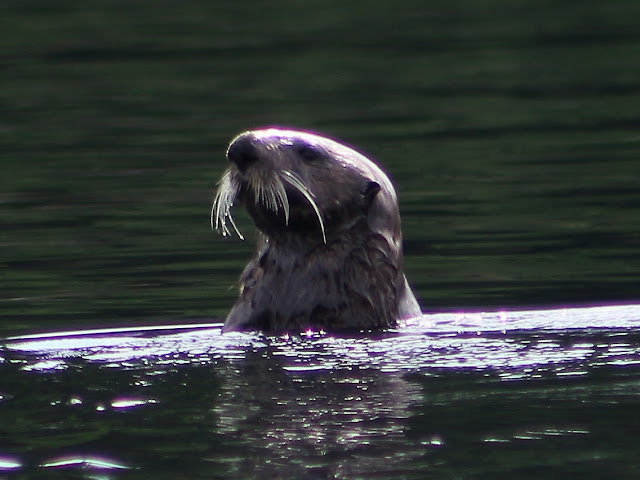I added some descriptions to last week's journal entry - I'll start with the glaciers.
 |
| Entering a glacial fjord. |
 |
| Icebergs appeared as we got closer. |
Some were quite large:
Finally we reached the end of the fjord where we met the intertidal glacier.
It's hard to imagine the scale of these; the glacier wall is 240 feet tall.
We were fortunate enough to see multiple large calvings of the Margerie Glacier:
 |
| That splash is almost 200 feet high. |
It sounded like thunder when they hit the water and they sent six foot waves down the fjord.
 |
| A large iceberg that calved from the Dawes glacier. |
Alaska's intertidal glaciers are rapidly receding, putting all that ice in the ocean and accelerating sea level rise.
Female Harbor Seals travel far into the fjords where most of their predators won't to give birth. There are also plenty of safe, isolated icebergs, perfect for birthing young and keeping them "warm".
More seals in a warmer part of the Inland Passage:
Coming out from Margerie glacier we came up on a group of tufted puffins fishing in the clear, cold water.
A group of female mountain goats with their kids were feeding on grasses high up on the fjord walls where predators aren't nimble enough to catch them.

Deer in Alaska are quite a bit smaller than our White-tails. One needs to be looking for something the size of a large dog:
Bald eagles were everywhere we went except in the glacial fjords.
These are pigeon guillemots, a duck that lives only on the Pacific coast from southern California to northern Alaska.
Harlequin ducks are a species that live on the northern half of both North American coastlines though I'd never seen one
Finally, the whales. We came across pods of humpback whales on multiple days, sometimes quite close to the boat.
Humpbacks can be identified by the patterns on their flukes. I captured many flukes which I'll upload to a website. If those whales have been seen before, it will help scientists understand their migration patterns. If it's a new whale for them, I'll get to name it!






















Beautiful and captivating series of photos.
ReplyDeleteWhat an adventure! Thanks for taking us along
ReplyDeleteGreat pictures. Alaska was beautiful
ReplyDelete